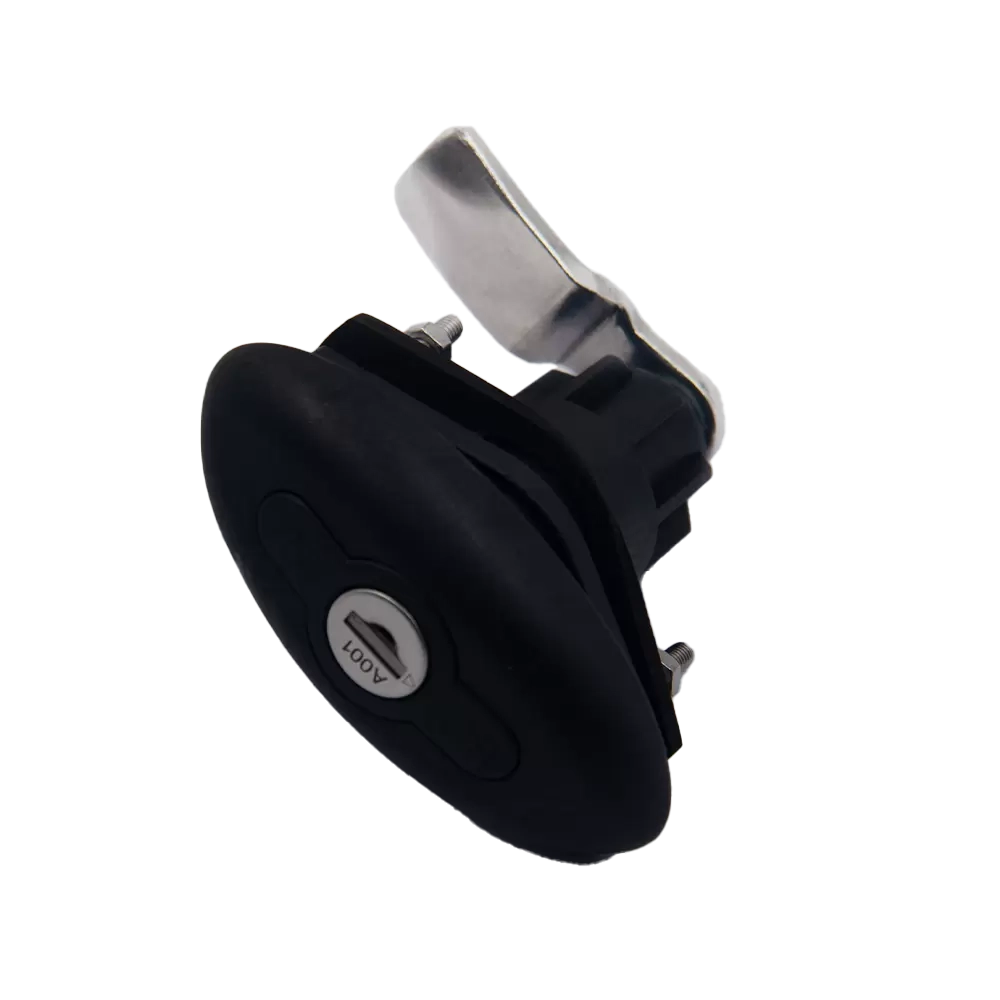In industries where operational security, equipment integrity, and environmental resilience are critical, choosing the right locking mechanism can make a profound difference. From electrical cabinets and telecommunications racks to HVAC systems and machinery housings, the need for high-performance access hardware is a constant. Among the most trusted solutions in this field is the electrolytic cam handle lock—an advanced mechanical locking system that combines corrosion resistance, mechanical precision, and ergonomic ease of use. Engineered for demanding industrial environments, the electrolytic cam handle lock is specifically designed to deliver reliable performance in both indoor and outdoor applications. It not only offers a secure locking interface but also withstands harsh operational conditions, including moisture, dust, vibration, and chemical exposure. This article Shengjiu explores the structural design and operational functionality of using an electrolytic cam handle lock in modern enclosure systems.
What Is an Electrolytic Cam Handle Lock?

An electrolytic cam handle lock is a mechanical locking device typically used to secure doors or access panels on enclosures, cabinets, or industrial housings. It features a cam mechanism—a rotating arm that engages with a strike plate or frame—and a handle or lever that provides user-actuated opening and closing.
The term "electrolytic" refers to the surface treatment applied to the lock body, which involves electrochemical coating processes such as electroplating or anodizing. This treatment significantly improves the lock’s resistance to corrosion, wear, and environmental degradation, making it suitable for long-term use in exposed or chemically active settings.
The electrolytic cam handle lock is distinguished by:
A rotating cam actuated via an external handle, knob, or T-grip.
A body and cam plate typically made from die-cast zinc alloy or stainless steel.
An electrolytic surface coating (such as zinc-nickel or chrome) for enhanced corrosion resistance.
A compression function (in certain models) to provide vibration resistance and water-tight sealing.
Mounting adaptability for panel thicknesses ranging from 1 mm to 5 mm or more.
This lock type is a standard component in industrial locking systems where quick access and high reliability are essential.
Design Structure and Operational Functionality of Electrolytic Cam Handle Locks
The performance of the electrolytic cam handle lock lies in its carefully engineered design, which combines robust mechanical elements with materials optimized for longevity and strength.
Lock Housing and Surface Finish
The main body of the lock, often made from die-cast zinc or stainless steel, provides the structural foundation. Electrolytic surface treatments—such as trivalent chromium passivation or zinc-nickel electroplating—are applied to this housing to enhance resistance to oxidation, rust, and chemical attack. This treatment also improves the visual finish and reduces surface porosity, which could otherwise trap contaminants.Electrolytic coatings are essential in environments such as food processing, marine installations, or chemical plants, where locks are exposed to aggressive elements or frequent washdowns.
Cam and Actuation
At the core of the electrolytic cam handle lock is the cam—a curved or straight metal arm attached to the rotating spindle. When the handle is turned, the cam rotates behind the panel frame, pulling the door shut or releasing it.
Depending on the application, cams can be:
Offset cams for variable engagement depth
Flat cams for flush door closures
Hook cams for grip-and-pull mechanisms
Multi-point cams in cases requiring additional locking security along a door’s edge
Many designs offer adjustable cam positioning, allowing the user to fine-tune compression pressure, seal tightness, and door engagement—critical in enclosures requiring IP65 or NEMA-rated environmental sealing.
Handle Ergonomics and Locking Interface
The handle component may be a T-handle, L-handle, wing knob, or recessed paddle, depending on the user interface and security requirements. Handles are designed with anti-slip textures and sometimes incorporate push-button or keyed locking mechanisms. For enhanced security, models with integrated cylinder locks (using keyed alike or keyed different profiles) allow only authorized personnel to open the latch. This is especially useful in telecommunications cabinets and mission-critical equipment where access needs to be strictly controlled.
The electrolytic cam handle lock stands as a cornerstone in the field of industrial access control—offering an intelligent blend of mechanical security, environmental durability, and user-friendly operation. Its electrochemical surface treatment ensures the lock resists corrosion and aging, even in the most aggressive service environments, while its cam-driven mechanism delivers reliable, repeatable performance day after day. Whether securing an electrical control panel in a manufacturing facility or protecting fiber optic equipment in a roadside cabinet, this locking solution delivers unmatched reliability and long-term cost efficiency. For designers, engineers, and facility managers who demand uncompromising quality in access hardware, the electrolytic cam handle lock remains the trusted standard across industries worldwide.






